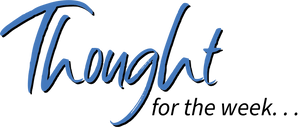Tap the Power of Productive Failure. Here’s How
The term “productive failure” might seem like an oxymoron. We typically think of failure as fruitless, as something to be avoided. Yet, when viewed from a learning perspective, failure can be a powerful stimulus for future success. In fact, mistakes, missteps, and setbacks can be among the most valuable precursors to learning available to our students.
It goes without saying that we all enjoy the feeling of having succeeded. However, success can be the result of many factors, not all of which are evidence of learning. For example, we may have simply made a lucky choice that just so happened to work out. Or we may have made mistakes of which we were unaware, but we still were able to achieve the outcome for which we hoped. Regardless, we can feel little incentive to commit to continued learning when we feel as though we have already succeeded.
On the other hand, those times when we try and fall short allow us to realize that we have more to learn—more skills to develop, more approaches to try, and more answers to discover. We have an incentive to reflect, adjust, and try again. Hiding within a less-than-successful experience can be key insights, hints for new approaches, and suggestions for efforts that, if pursued, lead to true success.
Unfortunately, in schools we typically applaud successes and discount, even criticize, failure. Failure is seen as something to avoid despite its potential to lead to learning breakthroughs, new understanding, and lasting knowledge. When respected and valued, failure can be the starting point for what propels learning forward.
Productive failure in our work with students can take multiple forms. Students may often experience failure as they attempt to apply new learning in response to direct instruction. Failure that is followed by denial, disinterest, and disregard is unproductive and typically offers little learning value. Failure only becomes productive when it is followed by examination, reflection, the search for new information, and additional informed attempts. Obviously, what happens after a learning attempt has a greater impact on long-term learning than does how well or poorly an initial attempt might have gone.
Productive failure has also been shown to be a powerful learning driver when it precedes instruction. A study reported in the Journal of Learning Sciences found that ninth-grade students who unsuccessfully tried to solve math problems on their own before receiving instruction achieved levels of comprehension following instruction that were nearly double those achieved by students who received only the direct instruction. Another study involving seventh-grade math students found that even though students were unable to generate correct answers on their own prior to instruction, following instruction they significantly outperformed students who were introduced to the problems and solutions via direct instruction.
While productive failure has not received significant attention in elementary and secondary education, its power to stimulate and support learning is well known and respected in other fields. In fact, productive failure is such a powerful approach to learning that it is commonly used in medical schools to prepare future medical professionals.
So, what are some ways we can tap and leverage the power of productive failure to increase learning success for our students? Here are some places to start.
We can reinforce with students that:
- Failure is feedback. The experience contains important information about how to succeed.
- Failure only lasts until the next attempt is made. Continued learning effort erases any negativity in the experience.
- Struggle in learning can be a powerful teacher regarding the nature, structure, and resolution of problems. Struggle can also lead to lengthened retention of new learning.
- Successful learning attempts still deserve examination to determine whether they were the result of luck or chance or resulted from understanding and insight. They can also contain hints about how to achieve even higher levels of success.
- Instruction does not always have to precede efforts to learn. In fact, trying to solve problems before instruction can uncover unique and creative learning strategies and insights.
- When we learn or create something truly new, we must almost always engage in productive failure. Consider Thomas Edison’s one thousand failed attempts before inventing the light bulb.
- What matters most is not whether we try and fail; it is what we have learned from and do with the experience.
Failure should not be a “dirty” word in learning. In fact, it is a crucial and unavoidable part of challenging learning experiences. We would do well to honor, respect, and value learning attempts that fall short, especially when they are mined and when they lead to new insights, opportunities, and discoveries.
Source:
Kapur, M. & Bielaczayc, K. (2012). Designing for productive failure. Journal of the Learning Sciences. 21(1), 45-83. https://doi.org/10.1080/10508406.2011.591717















